Archives
-

Exiles
No. 23 (2025)The notion of exile is inseparably tied to the idea of separation and rupture, two conceptions that are at the basis of any representation of exile, be it physical or symbolic. The present issue of Oltreoceano entails various visions of the dramatic condition of abandonment of one’s own identity – loss of language and roots – with consequent existential quest. Works by authors whose existence shifted from one to other cultural and social spheres are the object of the contributors’ analysis to this issue of the journal. Ranging from literary and cultural perspectives as they are manifest in the three American linguistic spheres – United States, Canada, South and Central America – the essays extend their outlook to countries belonging to other continents – namely Saharean and Mediterranean Africa and Europe, the latter being a haven for many intellectuals of historic al and geographic backgrounds. An interview with Siegfried Gerhardt, an exile from East Germany, United States, Canada, and South America introduces the theme of “Migratory Literatures”, as discussed in this issue of the collection.
-
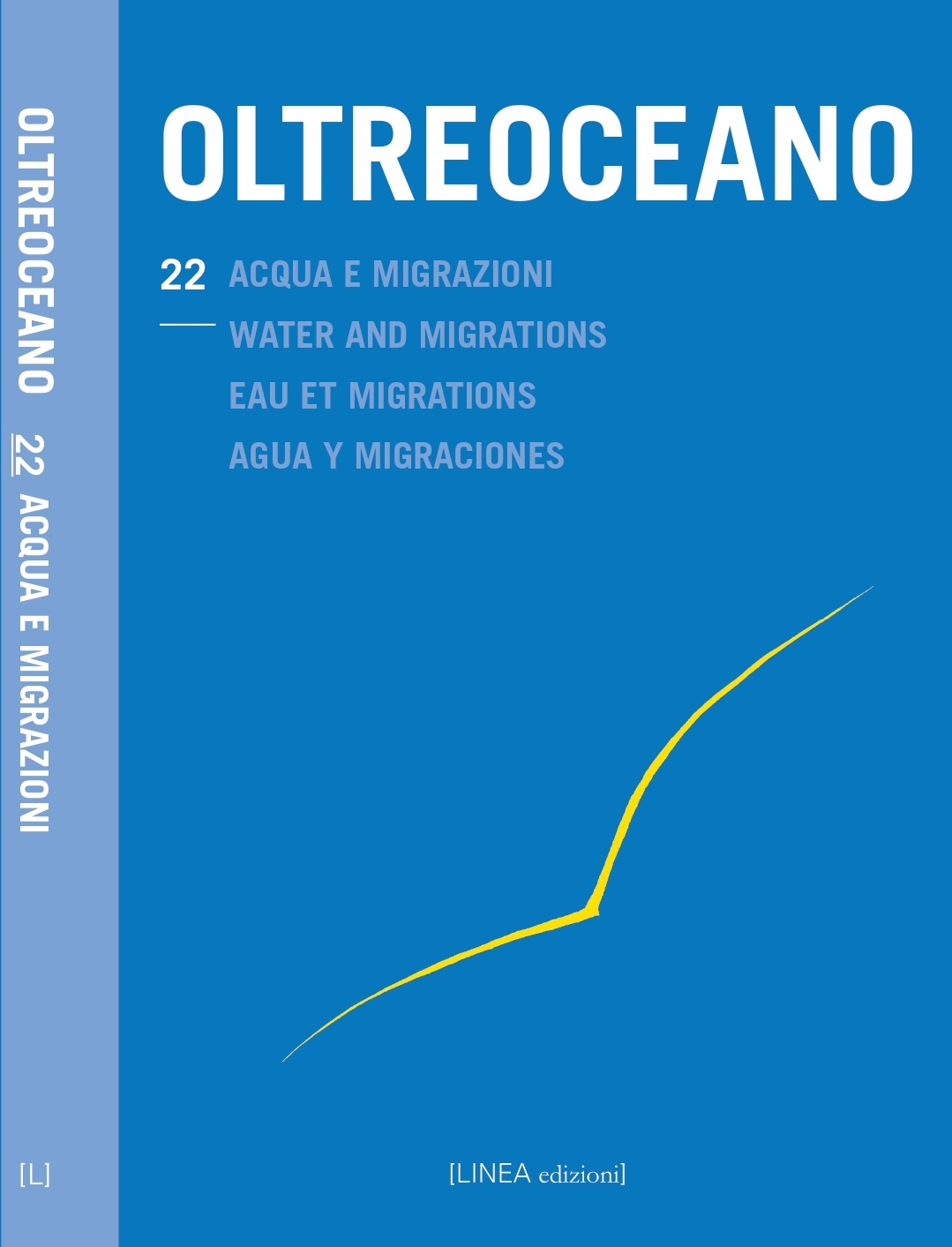
Water and Migrations
No. 22 (2024)This issue examines the multiple meanings of water and its importance in literary texts. As a symbol of totality, where everything is possible, the ocean, in particular, links numerous aquatic mythologies which resort to mysterious dark seas and primordial waters as the world’s site of origin from the abyss of the night. The ocean thus has the ambivalent function to both separate and reunite, thanks to well-established routes that over time have intensified trade relations, territorial ambitions, scientific and technological discoveries, and general theories. Even the Atlantic Ocean has been traversed by numerous voyages, despite having long been considered as the terror of sailors, the External Sea, the Sea of Darkness, and the impassible Surrounding Ocean, before the revolutionary voyage of the three caravels in 1492. These voyages include those embarked on by many Italians who, from the second half of the nineteenth century onwards, set out in search of a new homeland filled with promises, but also with obstacles to overcome. The articles in French, English and Spanish investigate the multiple meanings of water across different continents and highlight conceptual similarities in spite of territorial specificities. Nor could it be otherwise, since water is both a source of perpetual change and an essential element of nature and humans, who have a conflictual, but at the same time gratifying, relationship with it.
-

The Isthmus and the American Continent: Literatures, Cultures and Histories
No. 21 (2023)The aim of the following study is to discuss the concept of bridge of contact as the one conceived among the Anglophone, Francophone, Latin American realities. In particular it will enquire the mode in which it is exercised in the entire histimic zone ‒ and by extension in all central American states, including the islands, located between North America and South America. In the aesthetic acquisition of nature in open dialogue with the individual and with society, literature becomes a focal point for the understanding of the outer world and the inner microcosm, while at the same time it indicates the voyage within the physical space as a mere necessity for all those who intend the act of writing as a mission towards knowledge. The contact between cultures affects all identity issues and establishes new points of reference, transforming culture into richness and even individual awareness. For this reason, stemming from the very context, it is interesting to verify whether in literary texts, be they in English, French or Spanish, the impetus towards a relentless globalization is affirmed or whether the choice to cultivate one’s own cultural roots, albeit modified or “contaminated”, prevails within a multicultural territory.
-

Colonial Memory and Fractures in the Cultural Representations of Contemporary Women Authors
No. 20 (2022)This special issue of the magazine focuses on women's literary and artistic productions that bear traces of colonial memory. The gaze extends to all continents touched by French colonization, America, Africa and Asia. The sea, once crossed by colonizers and slave traders and today by migrants, reveals itself to be a space that a very dense "world-frontier" pass through. The female writers, artists, and intellectuals of multiple origins whose works are analyzed here explore this frontier, using the French language. The first two sections "Regards féminins et photographie" and "Le discours colonial chez les écrivaines contemporaines" collect articles that examine the literary works of authors poised between two or more countries: Marie Cardinal, Assja Djebar, Colette Fellous, Marie NDiaye, Fatou Diome, Léonora Miano, Lisette Lombé and Anna Moï; the next section is dedicated to the contemporary dramaturgy of Maryse Condé, Gaël Octavia, Marie-Thérèse Picard and Alexandra Badea, as well as the cinema of Claire Denis; the two contributions in the last section present the engagées biographies of Gisèle Halimi and Elisa Chimenti, intellectuals who played an incisive role in Tunisia and Morocco. The studies collected in this issue cast an unprecedented look at a production still little explored globally and invite us to revisit in a new light the history of French and French-speaking culture of the twentieth and twenty-first centuries in a perspective of close connection with the French colonial past.
-

Utopias in Writings from the Americas
No. 19 (2022)This volume addresses the topic of utopia and focuses on the individual and collective hopes and expectations of migrants in the English-, French- and Spanish-speaking communities of the Americas. The analysis of several literary works based on multiple fictional models reveals how the critical gaze employs various technical, ontological and epistemological angles to create fictional universes which are projected into a desirable future. It also reveals how these texts go beyond Lotman’s concept of the semiosphere—that circumscribed semiotic space which is aimed at defining the cultural territories of a given society.
-

Honduras: The Land of Dreams and Utopias
No. 18 (2021)This special issue pays homage to a geographical area which, despite being the second largest country in Central America, remains rather marginal in the international context due to the great problems it has had to face because of the Spanish colonialization and the Anglo-French and US interference. Honduras is, nonetheless, a fertile breeding ground for utopia and the implicit belief in perfectibility and human progress. The issue comprises a number of critical-literary studies on Honduran traditions and cultural values which analyze the dreams, utopias and dystopias that have contributed to revitalizing obsolete cultural systems. The significance of these utopias/dystopias is obvious, since they express the dis-ease of a society oppressed by individual and collective frustrations and are an attempt to go beyond the suffering of the present by broadening the gaze onto the future. For this reason, they abound in times of crisis and act as catalyzers of hope by projecting the possibility of a happy life and of an ideal order that can be enthusiastically reached in the future. In particular this is testified by the contributions of poets and writers present in the second section, who offer their own personal interpretations of landscapes and subjectivities.
-

Mythical and Historical Wanderings
No. 17 (2021)This volume focuses on the concepts of myth and history in migrant writings through two ways of perceiving life. The first approach is mainly objective and is solely based on observing historical and social facts as a mere backdrop to human actions. For economic migrants, the difficulties in finding a place to stay or a job, added to those of integration are often considered insurmountable problems, which are made even worse by incommunicability and the unbearable weight of silence experienced as an absence of unsaid and unheard words and of meaningful foreign words. Political exiles, on the other hand, center their writings around the dialectical relationship between private and public, which remains, nonetheless, subordinated to peculiar historical developments. The second approach is subjective and is more prominent in migrant texts since its aim is to reflect a multifaceted image of the self because of the plethora of behaviors and ideas it is exposed to. Inevitably, there is a contraposition between the old and the new world, between two parallel universes which simultaneously co-inhabit plural landscapes and situations, and appearing intrinsically true and authentic, as they convey both violence, suffering, distress and fear, as well as love and hope for life.
-

On Translation: Aspects of Translation and Self-Translation
No. 16 (2020)This volume attempts to answer some of the still-debated formal, pragmatic and chronological questions in the field of translation theory, and it focuses, in particular, on the way in which plurilingual individuals interiorize translation and the passage from one’s mother tongue to a different other. The various contributions investigate aspects pertaining to the mechanisms of self-addressed discourse, the links between syntax and identity in interior dialogue, the difficulties inherent in translation or self-translation, and how to find adeqaute solutions for the translation of missing words. To answer the etenal dilemma revolving around the very possibility of translation, the contributors embrace the concept of rewriting, according to which the translator is free to express the meaning of the original whatever the style or the language chosen.
-

Geographies and Literatures: Places of Emigration
No. 15 (2019)This volume examines the impact of migrants on the geographical reality of North, Central and South America through an analysis of the places and literary texts of migration. Thanks to the mingling of curious travellers in serach of an identity, of Europeans (among which many Italians) in search of a job, and of various indigenous peoples who moved into the cities, those vast lands were transformed into the multicultural meting pot we know today as the New World. As the migratory flows intensified, the early descriptions of the landscape gradually changed. Initially, emotions, intimate yearnings, hidden desires and abstractions prevailed in the narration, so that the resulting texts mimicked a harmony which can hardly be found outside of one’s homeland. At a later stage there was a revisitation of the past according to the concept of liminarity as regards with individuals, situations, spaces and time periods. This is what made it possible to re-inscribe the history of identity transitions within geographical realities that were increasingly considered one’s own as the concept of homeland developed. The aim of the volume is to show how the geographical reality of the Americas has a common point of contact with the vast spaces of literature; it emphasizes possibilities of dialogue or of silence between the texts and the places of migration. These contact zones aptly disclose both geological stratifications and the overlapping of histories and stories, of culture and nature, of literary imagination and direct experiences (both nice and ugly, traumatic and exhilirating), of past and present, of void and full, and of ancestral and new.
-

The Religious Dimension of Immigration in the New World
No. 14 (2018)This volume examines how the spread of religion through the evangelizing work carried out by missionaries and their cultural and educational activities can be considered from different perspectives, namely as an obstacle or stimulus to social mobility; as a mere talisman devoid of any ethical principles but capable of upholding adversities; as a trigger for narratives on cultural and identity aspects of the ‘old’ homeland; and as a tool through which to accept new doctrines necessary to (re)define the idea of nation and culture in integrated migrant communities. Despite their geopolitical differences, North, Central and South America are similar in the way in which they refounded their religious dimension. The transfer of religious cults and practices beyond national and cultural borders forged an idiom which clearly carries the traces of the migratory experience and which is open to both colonization and the opposite, that is, to ethnic tensions and battles and to nationalizations. Religion is thus a useful tool through which to understand migratory dynamics which converge in the encounter between indigenous and western religions and which give rise to a fertile cultural syncretism, which is not devoid of conflicts. As the title suggests, the volume comprises contributions on a broad variety of aspects as it attempts to discuss the topoi of this specific literary phenomenon.
-

The Linguistic Codes of Emigration in the Americas
No. 13 (2017)This volume draws on scientifically rigorous experimental research to investigate the linguistic codes of the Spanish-speaking communities in North, Central and South America, who were the first to establish a direct contact between the self and the other. The newcomers, who arrived in the new lands with the intention of taking possession over them - first arrogantly with their weapons, and then defenselessly - were able to establish a dialogue with the indigenous peoples who were born in these places. The codes are not necessarily verbal, but include body language, music and song which – ancient land-based cultures teach us – are notoriously able to communicate with the same force as the word is. Today, artistic expressions linked to body language and image are, alongside literature, key factors in revitalizing collective consciousness and resemantizing the epistemological system. There is the retrieval of an anthropology of language beyond words, which encompasses the whole field of culture, rather than the linguistic dimension alone. Besides enlivening historical sites and physical spaces, this retrieval highlights the truthfulness of the text, which depends only on the (‘migrant’) novel’s ability to persuade and destroys the critical consciousness of readers who are led to experience lie as truth and truth as lie.
-
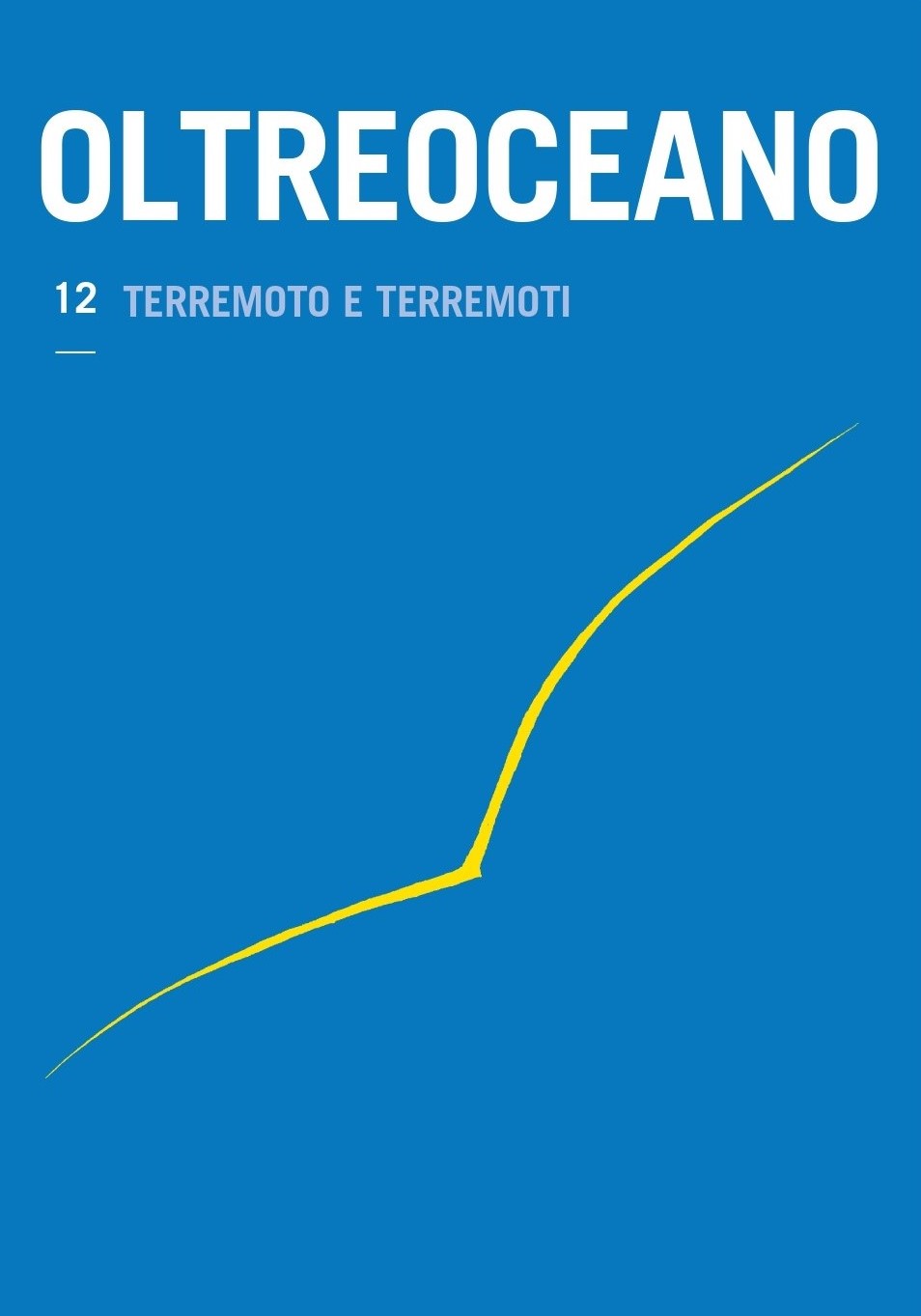
The 1976 Earthquake and Other Quakes
No. 12 (2016)This special monographic volume is dedicated to the terrible earthquake which devastated Friuli and the entire Friuli Venezia Giulia region on May 6, 1976 at 09:06 p.m. with a magnitude of 6.4. For the recurrence of its 40th anniversary, the volume seeks to internationally acknowledge the event by examining the literature its tragic consequences produced. A first section focuses on Europe, and in particular, on Friuli, which became a model for crisis management and post-quake reconstruction, and on Romania, which is, together with Italy and Greece, the most geologically instable area of Europe and the country at greatest seismic risk in the Mediterranean. This first section also includes a technical study carried out by the researchers of the Institute for Construction Technology of the National Research Council (Italy), based in San Giuliano Milanese (MI). The following sections focus on North and South America: the former examines how Friulian immigrants to the US and Canada (including the Francophone province of Quebec) shared the suffering and hardships of their fellow countrymen and provided humanitarian and economic aid; the latter draws, instead, attention to the never-ending quakes and natural catastrophes which constantly hit Latin America. A final section is dedicated to creative texts (poems and stories) which witness how the same feelings, fears and hopes can be communicated through different languages and means. Literature takes on the meaningful task of helping to face trauma and suffering by prompting a search for truth and by voicing the resilience of the victims. Just as some materials withstand shocks without breaking, individuals can recover from a tragic event and the discontinuity of dynamic systems by transforming the crisis into new opportunities and hope for the future.
-
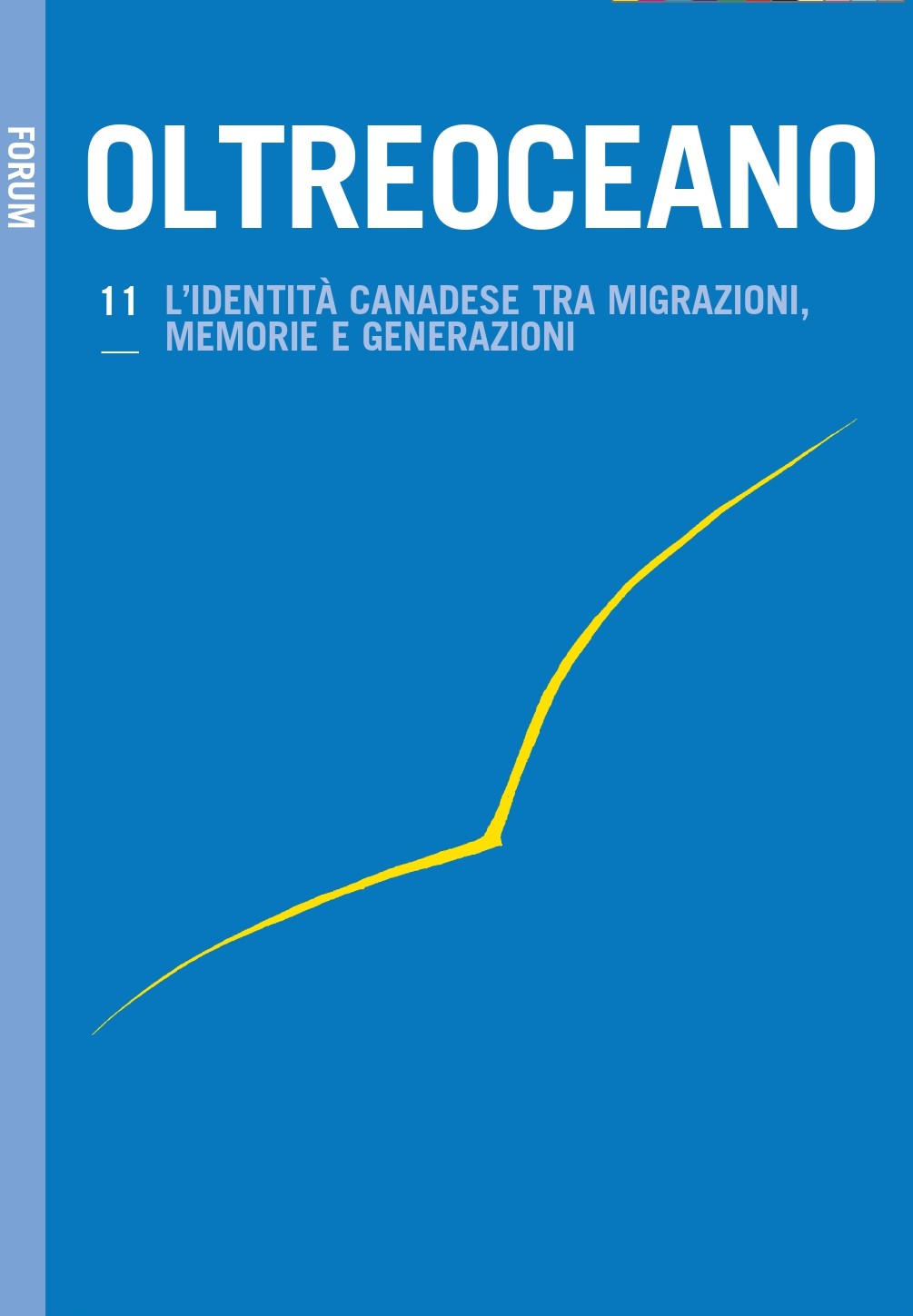
Canadian Identities, Migrations, Memories and Generations
No. 11 (2016)In this volume we examine how Canadian identity is still very much a work in progress. Indeed, a complex web of cultural elements continues to trigger movements of integration and repulsion, of fusion and juxtaposition, which are always partial and negotiable. Literature plays a key social role because symbolic discourse it offers everyone ways to solutions and suggestions to take part in the creation of a national identity. As products of cultural transnationalism or transculturalism, migrant writers provide the mainstream Canadian society with alternative cultures, which are capable of tearing down nationalisms and going beyond limited local realities. This emerges quite clearly from the contributions contained in the volume. They indeed the interdisciplinary connections among topics related to intergenerational relationships, journeys/migration, aging and memory, quality of life and institutions, and creativity as a marker of personal and national Canadian identity. In contrast to the Canadian government’s multicultural model and Quebec’s idea of metissage, a Hispano-Canadian project puts forward the idea of building an archetypal world whose epistemological nature is based on considering what counters reality as a model. A final section is dedicated to Friulian emigration through the analysis of works by Friulian and Julian-Dalmatian writers.
-

Pier Paolo Pasolini in the Americas
No. 10 (2015)For the 10th anniversary of Oltreoceano and the 40th anniversary of Pier Paolo Pasolini’s death, this volume explores the links between the concept of ‘migrant literature’ and Pasolini’s poetry. In their trans-crossing of landscapes and languages, both Pasolini and migrants seek contact zones between their own traditions and other customs, in an attempt to continuously reshape their personal identity, establish new connections and prompt further encounters. The various articles gathered herein provide an updated overview of the critical reception of Pasolini’s works in North and South America, where scholars are showing a renewed interest for this Friulian intellectual and the multiple facets of his works. Indeed, as the rich bibliographical references included in the four sections (Canada/Quebec, USA, Latin America and Brazil) witness, numerous are the overseas events, translations, film festivals, literary homages, critical articles and works inspired by his oeuvre or his life. Poetic homages by Italian diasporic writers have also contributed to making him known in various languages and countries. These echoes and specular allusions from the Americas disclose the contours of Pasolini’s ideas and poetry which anticipates some core problems of the postcolonial era and foregrounds an ever more contemporary transcultural utopia.
-

Listen to Me with Your Eyes: Migrant Writing and Cinema in the Americas
No. 9 (2015)This volume focuses on the language of films and its special relationship with literature in the Americas. In order to identify the similarities and differences between these two art forms, the investigation is approached from multiple directions and the contributions focus on intertwined aspects. Semiotic and narratological analyses, for instance, reveal references to cinema in literary works by migrant writers, while the study of polygraphic works stresses the activity of migrant film directors who often experiment with both narrative means. In other cases, the narratives of films and of literary texts are compared; diachronic exegesis of single films, currents and movements which have become established in one or more places is also offered. Topics like memory, poverty, exclusion and marginality are addressed not only through literature and films but also through music, which is equally important in the process of dissipating scenarios of individual and collective crisis and personal dilemmas within of globalized societies. What emerges from this multifaceted and extremely interesting field of investigation is ultimately the same urgent and distressing need to search for identity, which is shared by old and new migrants alike, in Canada, the US, Mexico, Guatemala, Cuba, or in any other area of Central and South America, especially in Argentina.
-
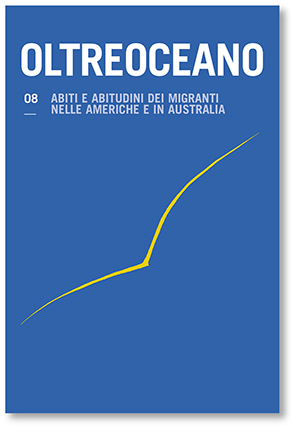
The Customs and Clothing of Migrants in the Americas and Australia
No. 8 (2014)The focus of this volume are the customs, behaviors and clothing of migrants which convey extra-literary social and ethical values. As expressions of individual and collective identity, clothes not only elicit a re-inscription of ethnic origins and a bridging of different worlds, but also become emblems of migration. As sources of consolation and unease, of pride and rejection of belonging, they allow migrant individuals to wear their new and old identities in order to feel integrated into the current reality. Moreover, they foreground another important aspect of migrant literature. The articles in the volume tackle the topic from various angles, by intertwining different forms of writing, spanning different periods and covering an ample geographical space that comprises the Americas and Australia. Together they create an intertextual web wherein complex relationships between the works, languages and multiple forms of writings come into play. A special section is dedicated to artistic creations which are based on the migrations of the word amidst emotions and the never-ending search for self. These creative works involve an implicit change in meaning from the intellectual self to the emotional self.
-

Women at the Kaleidoscope: Rewriting Female Identity in Migrant Texts from Italy to the Americas and Australia
No. 7 (2013)The articles in this volume set out to add another tile to the still incomplete mosaic of migrant writing by making a valuable contribution to the definition of rewriting female identity according to postmodern theories. Italian and international scholars working in different languages (French, English, Spanish and Portuguese) offer an interesting and varied scenario of the fragmentation that distinguishes women’s writing. The voices of the critics mingle with those of writers who offer us other perspectives through which to evaluate how female characters are presented.
-

Travelling Women: Migratory Experiences from Italy and Spain to the Americas
No. 6 (2012)This volume gathers critical studies and poems to provide an overall view of emigration to the Americas from a female perspective. Women were undoubtedly the protagonists of migratory flows in the last two decades of the XX century and the first decade of the XXI century. They had to endure not only linguistic obstacles and bewilderment in the new reality, but also the more painful and complex aspects of domination when casted in dictatorships or armed conflicts. The dialectical relationship between private and public provides the narratives with fertile suggestions from direct life experiences, which thus become metaphors for identity and cultural struggle. At the same time, they grant access to different ways of life and new re-appropriations of social structures. Among the multiple forms of female migration, some are momentous, others bizarre, and others still dramatic. They thus witness the range of different situations which urge one to leave the homeland, whether for a short period of time or permanently. Alongside old problems like displacement, nostalgia, integration and assimilation, there are others linked to globalization like the fragmentation of the self and of life, or else lead to excessive forms of localization. For these reasons, the suitcases of these travelling women are full of personal clothing, as well as recipe books, family pictures and mementos. Those suitcases carry mechanisms of displacement and relocation in new spaces, as well as the desire for dialogue and the urge to transmit ancient knowledge and forgotten words which have been reactivated by the need to rediscover roots and to create a new social order based on solidarity—a feeling often used by women as a tool for integration and an antidote to solitude and nostalgia in the most dramatic moments of their lives. The suitcases are full of dreams and of the real aspirations of these women who are constructively curious towards themselves, others and the world around them.
-

Self-Translation in Migrant Literatures
No. 5 (2011)This volume focuses on self-translation and, in particular, on writers of Italian origin who choose to write their works in the language(s) of the countries they migrated to or they were born in from migrant parents. The aim is to investigate the reasons for which they engage in the radical choice to self-translate themselves despite the numerous problems it entails. In some cases, the reliance on self-translation entails the further challenge of confronting oneself with the difficulties of a language which is now distant to the ear, but still close to the heart because synonymous with affections and traditions. In other cases, self-translation signals the conscious acceptance of a dual cultural identity and the need to come to terms with it through a process of recreation and rewriting, not only of their works, but also of their selves and their world. Interesting are also the problems pertaining to a guiding principle that can justify or at least give meaning and (sentimental, identity, stylistic and poetic) value to self-translation. The meaningfulness of said principle is greater when it is relevant to a writer’s life experiences and literary choices. Besides dealing with the theoretical and practical aspects of self-translation, the various articles offer interesting reflections on the ‘art’ of translation and safeguard it from the inadequacy of mere ‘technical’ transcoding.
-
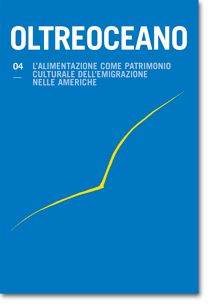
Food as the Cultural Patrimony of Emigration in the Americas
No. 4 (2010)The focus of attention in this volume is the relationship between food and emigration in the Americas. Indeed, since the second half of the XIX century, the North and South American continents have been reached by massive flows of immigrants seeking better prospects for their poor existences. The essays adopt a peripheral perspective to analyze a variety of topics pertaining to various disciplines: namely, to the science of food by reclaiming traditional recipes and the importance of the enological and gastronomic sector in general; to literary texts which emphasize food as a symbol for social integration, national identity, and the local/global nexus; to anthropology and sociology which consider food as a relief for the dissatisfaction of living elsewhere; and to the linguistic, folkloristic and ethnographic aspects of nutrition. Because of this interdisciplinarity and the multitude of territories analyzed, these considerations on the food-migration relationship offer an original contribution to the field of migrant studies.
-

Dialoguing with Poetry: Women’s Voices from the Americas and Australia
No. 3 (2009)The essays contained in this volume focus on women’s engagement with poetry, which, together with diary writing, was initially the only art form through which they could dialogue with themselves and the world. Poetry thus responds to their need to create an enchanted place where legends, folklore from the homeland, childhood games, and stories about fairies allow them to overcome inhibitions and self-censorship in a foreign country and to retrieve hidden emotions from the subconscious and the realm of irrationality. An essential feature in the works of contemporary female migrants is also the idea of poetry as a stimulus and emotional involvement, as truth, and as a universal form of expression and dialogue. Their need to voice their feelings and make the language of the soul universal has led them to experiment with new aesthetic forms, as witnessed in the section “The Voices of Poets”, which also sheds light on the many reasons that underlie their choice to embrace poetry and to transform tragic life experiences like emigration into aesthetic categories. Poetry, indeed, allows them to conquer solitude and turn it into that creative, interior space where they can imagine, think and feel alive. This section ultimately creates a constructive dialogue among the voices of different poets and allows us to both compare multiple points of view and identify key thematic cores linked to specific local traditions as well as writing processes in which poetic sensibilities and languages (Friulian, Italian, French, English and Spanish) mingle and complement each other so as to convey a truly universal idea of poetry.
-
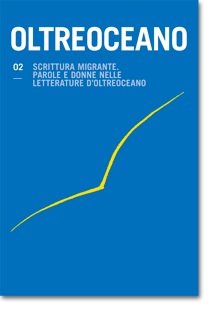
Migrant Writing: Women and Words Overseas
No. 2 (2008)This volume examines a myriad of literary texts from various countries to investigate the interconnections between women and writing. As both objects and subjects of narration, women have, indeed, fueled the development of literature over the centuries and have, in turn, evolved personally and collectively thanks to those literary texts. Literature has, for instance, allowed them to gain awareness of their own selves beyond the invisibility they experience within domestic walls, and has urged them to embark on journeys to faraway landscapes in spite of perils and language barriers. This special type of migration grants them the possibility to travel both through space and inward, into their innermost selves where they discover an interior order and a feminine perspective which they then project outward. Constantly looking toward the future, women have been able to establish themselves within social and political institutions and have played a key role in creating new societies, while keeping ancient traditions alive through their stories and preserving the knowledge of their ancestors. The volume collects critical essays which explore the complex and diversified world of female writing alongside the creative works of women writers who offer valuable insights into this unique universe.
-

Literary and Linguistic Itineraries
No. 1 (2007)This volume examines the literary texts of migrants to identify therein the sense of belonging to both the homeland, which is often strengthened by the tragedy of emigration, and to the host land, which becomes a new homeland through the process of acculturation. Indeed, if, on one hand, emigration marks a traumatic break away from the land of origin and a rite of passage toward a new life, acculturation into new geographical realities which are increasingly perceived as one’s own triggers, on the other, the development of a new national consciousness. The critical essays contained in this volume show how these literary texts foreground a dynamic image of culture and a desire to integrate into the new social reality. They highlight the constant urge that Italian immigrants to the Americas have to assimilate indigenous elements and to establish a dialogic and mutual relationship between cultures, as well as their will to solve problems pertaining to domination, confrontation with Native Peoples, modernism, regionalism, folk beliefs and cosmopolitanism.












